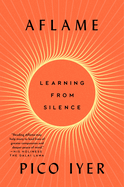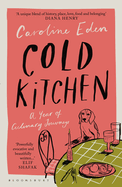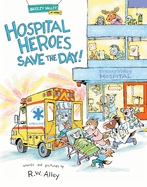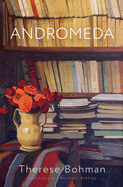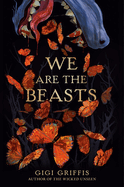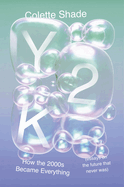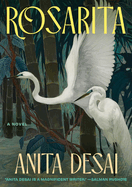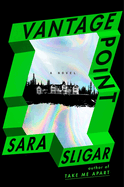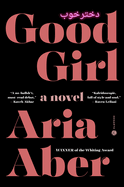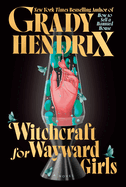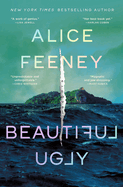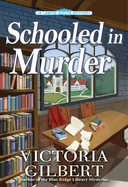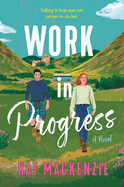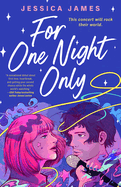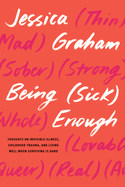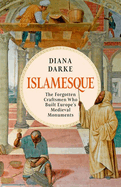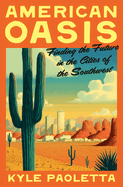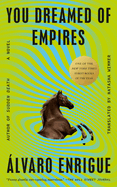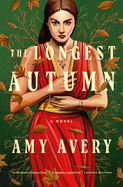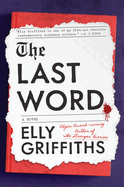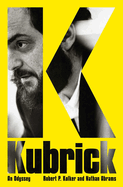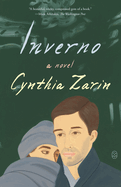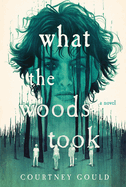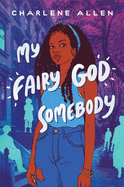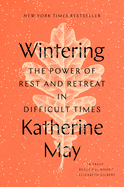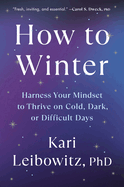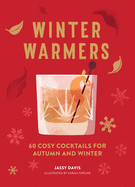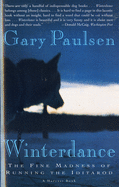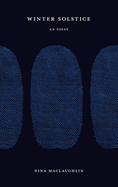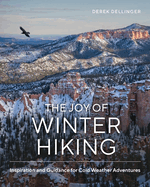Friday, January 17, 2025
In today's issue, we recommend Pico Iyer's Aflame: Learning from Silence, a "love letter to a place" where the acclaimed author has sought "solace and renewal in the consolations of solitude"; as well as Swedish novelist Therese Bohman's "sharp, observant novel" Andromeda, in which a platonic friendship provides a forum for a shared love of literature; and Colette Shade's "perceptive" and "hard-hitting" debut essay collection, Y2K: How the 2000s Became Everything (Essays on the Future that Never Was). Plus, the winsome animals in R.W. Alley's picture book Hospital Heroes Save the Day! demystify a hospital's hectic activity, rewarding very young readers with delightful sight gags.
In The Writer's Life, journalist Caroline Eden considers the historical and regional factors that shape the harvests and ingredients that inspired her memoir Cold Kitchen and the recipes included in it.
Andromeda
by Therese Bohman, transl. by Marlaine Delargy
A pair of bibliophiles discover common ground in unexpected areas in Andromeda, a sharp, observant novel by Therese Bohman (Eventide), translated from the Swedish by Marlaine Delargy. In 2009, university student Sofie Andersson lands an internship at Rydéns, a Stockholm publishing house that "looks like a ship moored in the city center." Sofie's only previous job experience may have been as a maid, but she shows poise when she tells editor-in-chief Gunnar Abrahamsson, a man close to retirement age and "something of a celebrity within the industry," that she agrees with the critics' tepid reaction to a recent title. He's so impressed by her candor that he gives her three manuscripts to assess. Soon, to the irritation of jealous colleagues, Sofie becomes an editor for Andromeda, Gunnar's successful "book series featuring 'the most interesting contemporary voices.' "
In swift, compact scenes, Bohman demonstrates that Sofie and Gunnar have more in common than a love of literature. They become platonic friends who meet for extended lunches and share several guiding principles, such as skepticism of capitalism and the importance of preserving tradition. The first half of the book presents Sofie's perspective, whereas the second shifts to Gunnar and the events that shaped his life and career. Some plot points are surprisingly conservative, but Bohman's thoughtfulness and sensitivity make this a worthwhile read. And along the way, she offers sly commentary on the publishing world, as when Gunnar says of book critics, "Usually they write what they're expected to think." Oh, those critics. --Michael Magras, freelance book reviewer
Discover: In Therese Bohman's sly yet thoughtful novel,a young woman interning at a Stockholm publishing house develops an unexpectedly meaningful friendship with the retirement-age editor-in-chief.
Rosarita
by Anita Desai
Lauded Anita Desai's return to publishing after a dozen-plus years will undoubtedly draw extra attention to her spare, sublime Rosarita, about an Indian woman studying Spanish in vibrant San Miguel de Allende. Desai writes intriguingly in second person to introduce her protagonist, Bonita, who sits on a park bench and realizes she's not alone: "Staring at you fixedly, taking in every detail of your person" is Vicky--although Bonita calls her "the Stranger"--who insists she knew Bonita's mother, the titular Rosarita. Ignoring Bonita's correction that her mother was named Sarita, Vicky reveals a "mythical mother" who arrived alone to study painting in Mexico. Bonita longs to believe, to dispel her own memories of a silenced and abused Sarita. Desai skillfully shifts to third person, as if suggesting a distanced truth, to resurrect Rosarita who, haunted by the legacy of India's Partition, becomes captivated by Mexican muralists and the Mexican Revolution, and temporarily escapes through art.
Desai provides no definitive revelations nor resolutions. The Stranger all but disappears, while Bonita's search feels unfinished. She imagines her mother "clutching her passport, her visa, her ticket, a bag, her fear and her nerve, doing what till the very last she had not believed she could do." Bonita considers her own autonomy: "Just as you had shed her... she now shed you. Go free." As in The Zigzag Way (2004), which was also set in Mexico, Desai's intricately sensory descriptions of landmarks and landscapes transform cities and villages into memorable characters. Despite the novel's brevity, Desai turns Bonita's journey into an immersive experience through indelible, exquisite storytelling. --Terry Hong
Discover: An Indian woman studying Spanish in Mexico encounters surprising memories about her mother from a stranger in Anita Desai's sublime examination of identity, autonomy, and the legacies of trauma.
Vantage Point
by Sara Sligar
An ancient family curse roars back to life in Sara Sligar's superbly dark second novel, Vantage Point. Sligar's fiendishly clever thriller delivers a hefty dose of horror-tinged suspense while expertly navigating contemporary themes such as online violations of privacy and the head-spinning speed with which artificial intelligence can manipulate people's lives.
Orphaned years earlier in their teens, Teddy and Clara are heirs to the famed Wieland fortune and Vantage Point, a majestic cliffside island estate in Maine. Teddy is the steady older brother who has rescued Clara from self-destruction too many times to count. Clara's heart-wrenching struggle with disordered eating is portrayed with compassionate, devastating realism. The story opens with Teddy launching his Senate campaign. He is contentedly married to Clara's childhood best friend, Jess, a woman troubled by her own past.
Vantage Point is narrated by Clara and Jess in alternating chapters, a prism through which their interlocking stories collide and flow. When the Internet blows up with compromising videos of Clara, Teddy's scandal-free political campaign is suddenly in disarray. Whether or not the videos are real or "deepfakes," the damage is done. Meanwhile, Clara is haunted by bizarre visions. Is her illness interfering with her mind, or is there something more nefarious at play? And if it's the dreaded curse, which family member is it after?
Sligar (Take Me Apart) portends a terrifying future where, thanks to technology, reality is whatever we choose to make it. In a literary parable for our unsettling times, Vantage Point delivers an immersive, urgent drama reminding readers that sometimes it's the ones who seem the most broken that are the strongest. --Shahina Piyarali
Discover: This superbly suspenseful novel features a wealthy but cursed family haunted by eating disorders, an Internet scandal, and bizarre visions that portend a terrifying future.
Good Girl
by Aria Aber
Poet Aria Aber's intimate, immersive first novel, Good Girl, follows 18-year-old Nila, newly returned home from boarding school, as she sinks into a milieu of intellectual ravers in Berlin. Nila, short for Nilab, has an intensity that threatens to overwhelm her and her Afghan-immigrant family. Now, living in her childhood bedroom again, Nila chafes at the "commonplace poverty" in what she calls "Berlin's ghetto": the Gropiusstadt, a district of "brutalist concrete and unemployment rates," an area that "lingers under [her] skin like a cauterizing substance."
Nila attempts to escape the neighborhood, her widowed father, and its tattling uncles and aunts by spending long nights popping pills and snorting powders at clubs and parties. Soon she becomes absorbed into a group of philosophy-quoting partiers that includes Marlowe, a has-been writer who takes a keen interest in her. He's twice her age and has a girlfriend, but that doesn't stop the two from developing a destructive, volatile sexual dynamic.
Growing alongside her fascination with Marlowe is Nila's interest in photography and her desire to become an artist. With Marlowe, like with all her friends and acquaintances, Nila conceals her background. She says she's Greek or Spanish, anything but the truth. But as she's increasingly confronted by the othering and targeting of Afghans and other immigrants from Muslim-majority countries, she finds it harder and harder to keep her identity a secret. Aber (Hard Damage) skillfully layers the tensions pulling Nila apart as a young woman trying to navigate what it means to be the daughter of Afghan immigrants in a country like Germany. --Nina Semczuk, writer, editor, and illustrator
Discover: Good Girl is an immersive dive into a young woman's coming-of-age in Berlin amid class and social tensions, set in the milieu of rave culture.
Mystery & Thriller
Witchcraft for Wayward Girls
by Grady Hendrix
Horror novelist Grady Hendrix (How to Sell a Haunted House; The Final Girl Support Group; Horrorstör) presents Witchcraft for Wayward Girls, another unsettling--and yet somehow hilariously funny--story that'll keep even the most seasoned horror fan up at night.
In the summer of 1970, a pregnant 15-year-old finds herself abandoned by her disapproving father at Wellwood House. Given the name Fern by Miss Wellwood to ensure that no one knows her real identity, this latest unwed mother joins the ranks of other teenaged girls meant to birth their babies, give them up for adoption, and promptly forget that any of this ever happened.
But Fern and her fellow inmates can't just accept what is happening to them; their bodies are revolting against them and everyone at Wellwood's is determined to subjugate them by any means possible. After receiving an occult book from a visiting librarian, Fern begins to think that the witchcraft she reads about in its pages might be the answer. Too bad even witchcraft doesn't come without strings attached. Now, the countdown is on for Fern to decide whom her body truly belongs to.
Witchcraft for Wayward Girls makes the most of its equal-parts kitschy and compelling setting in sweltering 1970s Florida. But just as pregnancy creates the foundation for the horror here, it also becomes the basis of its characters' self-discovery and salvation. Pregnancy, like witchcraft, may be a source of fear for many, in how it can transform one's body into something unrecognizable and uncontrollable. But it can also be the embodiment of power, especially for those who may not yet fully recognize who they are but still refuse to be controlled by others. --Alice Martin, freelance writer and editor
Discover: Witchcraft for Wayward Girls is a horrifying and humorous send-up of the culture surrounding unwed mothers in the 1970s that is both timely and timeless.
Beautiful Ugly
by Alice Feeney
In Beautiful Ugly, Alice Feeney's seventh psychological thriller, a character muses, "Sometimes I think we are all the unreliable narrators of our own lives." For lovers of suspense, the beauty of Beautiful Ugly is the tantalizing array of characters who suggest unreliability, or worse.
The novel begins with primary narrator and thriller writer Grady Green on the phone with his wife, Abby Goldman, an investigative journalist. She's driving to their home on England's south coast when she tells Grady, "There's a woman lying in the road." Abby goes to check on the body, and after several minutes with no word from her, Grady sets out for her car, but "Abby isn't here. There is no sign of a person lying in the road either." From here Feeney takes the story one year into the future and to a tiny Scottish island--population: 25--where Grady hopes to conquer his writer's block and move past Abby's disappearance, although that's not easy when someone keeps leaving him reminders of his still-missing wife.
Readers may be a step ahead of Grady on one point, but Beautiful Ugly has the astonishing twist that fans have come to expect from Feeney (Daisy Darker; Good Bad Girl). More signature Feeney touches: heavy atmospherics (a mist-cloaked island, skeletal remains) and an unvarnished look at marriage, including through the eyes of a pre-disappearance Abby in the several chapters she narrates. If only the artistically stymied Grady had Feeney's gift for elaborate plotting, his problems would be solved. (His professional problems, anyway.) --Nell Beram, author and freelance writer
Discover: Alice Feeney's seventh psychological thriller, in which someone taunts a man with reminders of his missing wife a year after her disappearance, has the twist the author is known for.
Schooled in Murder
by Victoria Gilbert
Schooled in Murder is a sharp and smartly crafted cozy mystery series opener by Victoria Gilbert (A Killer Clue), author of several other cozy mystery series.
The novel's narrator is 32-year-old Jennifer Dalton, who works as the director of the campus writing center at a university in Virginia. Jenn is also the pseudonymous author of a series of mystery novels about "a retired female detective teaming up with a younger woman to solve crimes in their small town." Life imitates art when Jenn discovers the body of someone who fell from the mezzanine on the top floor of the university's library.
Jenn is shocked when the corpse is identified as Doug Barth, a popular but elitist English professor who'd been known to belittle students interested in writing genre fiction. Rumors arise that pages by Mia Jackson, a talented student who had a run-in with Doug earlier that day, were found at the scene. This sets up Mia, an aspiring romance writer who's suddenly nowhere to be found, as the prime suspect in Doug's murder.
Determined to clear Mia's name, Jenn sets out to deconstruct the events leading up to the murder by employing strategies used by her fictional sleuths. With the help from the university's reference librarian, a local psychologist, and the manager of the school's main cafeteria, Jenn cleverly roots out the killer, who has dangerous designs to silence Jenn.
A perceptive supersleuth, red herrings, and fatal secrets are the ingredients in what proves to be another winning formula for the prolific Gilbert. --Kathleen Gerard, blogger at Reading Between the Lines
Discover: In this sharp, suspenseful cozy mystery, the director of a university writing center who writes mystery novels under a pen name solves the murder of an elitist colleague.
Romance
Work in Progress
by Kat Mackenzie
Readers who have dreamed of escaping to the storied cities and vistas of their favorite works of literature will find a lot to love in Kat Mackenzie's debut, Work in Progress, about one woman's romp across the United Kingdom.
American Alice Cooper wants to put a hard year--in which she got fired and dumped--behind her, so she spontaneously books a three-week, all-women literary-themed bus tour of Scotland, England, and Wales. She arrives with a list of "UK Bus Trip Goals" spanning the mundanely relatable ("crawl out of pajamas") to the aspirational ("achieve stability, strength, and growth"), as well as a determination to "Eat, Pray, Love the crap out of this!" But the trip goes immediately awry via ruined luggage and an encounter with an antagonistic Scotsman at the airport, whom Alice soon discovers is also the tour guide. The fact that the bus is full of octogenarians with whom she feels she has nothing in common is salt in her wound as her plans come crashing down on the Edinburgh cobblestones around her.
While it's positioned as a romance, Work in Progress shines in its focus on Alice's journey back to herself and onward with a revised outlook on what her life can be. The novel brims with popular literary places like Whitby (setting inspiration for Dracula) and the Yorkshire moors (which cultivated Jane Eyre), cross-generational friendships, and some verbal sparring and dancing with a kilted Scot. With humor and heart, Work in Progress reminds readers to do what they love, "But do not be afraid to reinvent yourself if you discover that you do not love it any longer." --Kristen Coates, editor and freelance reviewer
Discover: A woman looking to escape realizes that what she actually needs is to come back to herself while traveling on a dreamy bus tour of the U.K. that will set Anglophile bookworms' hearts aflutter.
For One Night Only
by Jessica James
Daisy Jones & the Six meets Colton Gentry's Third Act in For One Night Only, an irresistible romance from Jessica James. Valerie Quinn and Caleb Sloane were two-fifths of the Glitter Bats, their pop punk high school band that went viral and made them famous. Valerie and Caleb also sneakily dated while the band was on tour, but their relationship ended in their early 20s, breaking up the Glitter Bats and leaving bandmates Keeley, Riker, and Jane resentful.
The former friends followed different career paths and haven't spoken in six years, but then Valerie, who transitioned to acting, ends up in the headlines again after being falsely accused of cheating with a fellow actress on her current television show. Desperate to rehab her image so that the show will be renewed for another season, Valerie decides to reach out to the Glitter Bats about a reunion concert.
Caleb and the others agree, so they spend the summer rehearsing and playing together again for their big night. But the band members find their lingering tensions difficult to navigate--especially when fan rumors spread that CalErie (worst ship name ever) is back together again. Valerie, eager for any press attention that will convince her network to save her show, convinces Caleb to lean into the rumors and flirt with her in public.
For One Night Only is clever, immersive, and tons of fun. James conveys the story through both Caleb's and Valerie's points-of-view, as well as through extracts from Glitter Bats fan forums, news articles, and tweets. Perfect for fans of second-chance romances or celebrity encounters, For One Night Only is a sneak peek into a glamorous world and a sexy, tumultuous relationship. --Jessica Howard, freelance book reviewer and former bookseller
Discover: In this second-chance rock-star romance, two members of a reuniting band try to hide their redeveloping feelings for each other while fake dating for press attention.
Biography & Memoir
Cold Kitchen: A Year of Culinary Travels
by Caroline Eden
Caroline Eden's fourth book, the sumptuous Cold Kitchen, harvests memories and recipes from her travels in Central Asia and Eastern Europe. The dozen chapters--three per season--cover an archetypal year.
Eden (Red Sands) cooks and reminisces from the basement kitchen of her Edinburgh apartment. When wanderlust strikes, she revisits favorite places via their cuisines. In Proustian fashion, smells and tastes evoke other times and places. As she prepares a watermelon, feta, and mint salad, she remembers asking a taxi driver to wait at the roadside so she could buy winter melons in Uzbekistan. To relive a Trans-Siberian railway trip, she bakes Russian hand pies stuffed with sauerkraut and hard-boiled eggs.
Later sections re-create memorable meals in Turkey, the Baltics, Poland, and Armenia. Many of the countries spotlighted bear tragic histories or have experienced unrest. Some dishes also bring to mind turbulent events: not long after Eden shared a duck plov at a friend's Kyrgyzstan dacha, news came of the overthrow of that country's president. Keeping cultural and food traditions alive offers a way of honoring a place's history--sorrow and all.
Cosmopolitan travel contrasts with cozy time back in Eden's kitchen, which is presided over by her beloved beagle, Darwin. Lyrical descriptions craft vivid still lifes. "A kitchen is a portal," she declares, and by following her memoir's tantalizing recipes--dark beer and rye bread pudding from Latvia, for instance--readers, too, can be transported to perhaps unfamiliar locales. --Rebecca Foster, freelance reviewer, proofreader and blogger at Bookish Beck
Discover: In her sumptuous fourth book, Caroline Eden journeys across Central Asia and Eastern Europe, harvesting a year of memories and recipes—and always returning to her kitchen in Scotland.
Being (Sick) Enough: Thoughts on Invisible Illness, Childhood Trauma, and Living Well When Surviving Is Hard
by Jessica Graham
In Being (Sick) Enough: Thoughts on Invisible Illness, Childhood Trauma, and Living Well When Surviving Is Hard, Jessica Graham (Good Sex) treats readers to a collection of 28 raw and revealing essays covering topics such as childhood trauma, being "DTF," and spoons. Some essays are short and breezy reads, others come in the form of poems, and many are deeply emotional and introspective depictions of what trauma and healing can look like in the moment and for decades afterward.
Using their experience with somatic trauma resolution, mindfulness, and meditation, Graham recounts their journey without pulling any punches in describing the challenges they faced. Though their essays are gritty in places, Graham always treats themselves with compassion and encourages readers to hold the same compassion for themselves. Readers may find that many essays invite the kind of personal reflection that, like some types of physical exercise, only feels good once it's been accomplished.
Exploring the notion of human suffering, Graham reflects on the necessity of pain in human existence from the perspective that "Pain is inevitable, suffering is optional." In "It's Like This Right Now," they teach readers that it's okay for things that cannot be changed to be how they are. In fact, throughout the collection, they assure readers in a confident and warm voice that it is okay. They are okay.
Perceptive and restorative, Being (Sick) Enough will be especially appreciated by readers searching for self-acceptance in the face of chronic illness, neurodivergence, trauma, or any other experience that makes them who they are. --Alyssa Parssinen, freelance reviewer and former bookseller
Discover: The raw and revealing essays in Being (Sick) Enough invite readers to feel satisfied with simply being themselves and offer reassurance that everything will be okay.
History
Islamesque: The Forgotten Craftsmen Who Built Europe's Medieval Monuments
by Diana Darke
As it takes readers on a grand "architectural odyssey" through historic Italy, Spain, England, and beyond, British author Diana Dark's Islamesque: The Forgotten Craftsmen Who Built Europe's Medieval Monuments shatters long-held assumptions about the artistic pedigrees of landmark "Romanesque" buildings erected between the ninth and 11th centuries. European art historians have insisted that classical Rome was "the source of all early Christian architecture," but Darke's intellectually thrilling, evidence-based findings suggest otherwise.
Darke (Stealing from the Saracens; The Ottomans) is a cultural historian of the Middle East who has lived in Syria. Her fascination with the zigzag pattern decorating the courtyard of her Ottoman house in Damascus led her to discover the same design gracing architectural gems such as England's Durham Cathedral. The motif originated in ancient Egypt, where early hieroglyphs used a zigzag line to represent water.
Like the zigzags, features such as sophisticated geometric vaulting and carvings of fantastical creatures appear on medieval structures across Europe, and Darke asserts that only craftsmen trained in Islamic traditions were capable of such artistry. These craftsmen, whether Jewish, Christian, or Muslim, left clues to their cultural roots, including Arabic numerals carved into the roof beams of Salisbury Cathedral.
Collaboration across religious communities in the medieval era was common, Darke notes, where Islamophobia divides societies in the 21st century. She can't resist pointing out the exquisite irony that superior Islamic craftsmanship forms the foundation of Europe's majestic architectural heritage.
Darke concludes with a gallery of images, including the abbey of Mont-Saint-Michel in France and the Leaning Tower of Pisa. Islamesque is a book of wondrous discovery, complete with an elegant narrative and photography. --Shahina Piyarali
Discover: A curious cultural historian uncovers the Islamic pedigree of Europe's majestic medieval structures in this wondrous "architectural odyssey" through Spain, Italy, and England, and more.
American Oasis: Finding the Future in the Cities of the Southwest
by Kyle Paoletta
Journalist Kyle Paoletta, who grew up in New Mexico, vividly illuminates the past and future of his home region in his first book, American Oasis. Through a blend of memoir, interviews, and well-researched reportage, Paoletta delves into the allure and challenges of life in cities such as Las Vegas, El Paso, Phoenix, Tucson, and his hometown of Albuquerque.
Paoletta provides an overview of the origin and development of the Southwest's major metro areas, starting with the Indigenous people who found ways to live in harmony with the desert's harsh beauty and constraints. He continues with accounts of the conquistadors and other European colonizers who pushed out the native peoples, determined to subdue the desert instead of submitting to it. That push-pull between the colonizer mindset (more growth at any cost) and the native one (learning to accept the landscape's strengths and limitations) continues to inform 21st-century life in the Southwest today.
Paoletta discusses urban planning, the constant problem of water use, the ostensible multiculturalism that often hides rampant racism--all issues specific to the region, yet relevant to the country at large. He portrays the stark, powerful landscapes that still draw people to the American West. Between chapters, he describes his experiences hiking the desert and visiting sacred and historic sites. These lyrical interludes are a dreamy counterpoint to the more factual portions, which brim with anecdotes, statistics, and biographical sketches of larger-than-life characters whose actions have shaped the region.
American Oasis is an indispensable regional history and an insightful consideration of how the Southwest's experience may provide a blueprint for the future of the entire country. --Katie Noah Gibson, blogger at Cakes, Tea and Dreams
Discover: New Mexican journalist Kyle Paoletta's first book provides a thoughtful history of the Southwest and an insightful consideration of its future.
Essays & Criticism
Y2K: How the 2000s Became Everything (Essays on the Future that Never Was)
by Colette Shade
Y2K, Colette Shade's debut collection of 10 perceptive essays, contrasts the promises and pitfalls of what she calls "the Y2K era," 1997-2008.
Shade, an adolescent at the turn of the millennium, recalls the thrill of early Internet use and celebrity culture. Her dot-com entrepreneur uncle invested $100,000 toward her college education and retired at 45. It seemed life could only get better, but this was a "dream state," Shade writes: "We dreamt we were ascending into the future" and "everyone could get rich on the stock market, drive a Hummer, own a McMansion."
Consumerism was the fundamental doctrine, Shade argues. A nascent antiglobalization movement ended with 9/11, after which Americans were expected to prove their patriotism by purchasing. The 2008 financial crash was a further turning point and, for Shade's generation, who were entering the working world, prompted a loss of faith in progress.
Y2K effectively illustrates the zeitgeist through well-chosen details and personal anecdotes. Shade recounts how bling-era rap music's mainstream success was seen as evidence of postracial and postfeminist harmony, and discusses how a "hypersexual" culture and an aesthetic of "paleness... blondness... [and] thinness..." shared by the period's most successful models contributed to her disordered eating.
The collection isn't stuck in the past but traces the way into the present. As Shade considers how such disparate topics as climate change and Starbucks became political footballs, she highlights U.S. society's increasing polarization. The 2016 election of Donald Trump sparked, for Shade, déjà vu to George W. Bush's anti-intellectualism.
Outer space motifs, reality television, Smashmouth lyrics: Y2K is a feast of millennial nostalgia. Yet this hard-hitting work of cultural criticism, recommended for Jia Tolentino fans, reminisces only to burst bubbles. --Rebecca Foster, freelance reviewer, proofreader and blogger at Bookish Beck
Discover: Colette Shade's debut collection of 10 perceptive essays contrasts the promise and pitfalls of what the author dubs "the Y2K Era."
Religion
Aflame: Learning from Silence
by Pico Iyer
Pico Iyer's illustrious writing career has taken him around the world many times, but one of his favorite places appears to be a tiny monastery high above the Pacific Ocean. Aflame: Learning from Silence is a love letter to a place to which Iyer has returned over and over for more than 30 years, seeking solace and renewal in the consolations of solitude.
The location that has played such a central role in Iyer's spiritual and emotional life is the New Camaldoli Hermitage, established in 1958 in California's Big Sur. The monks who reside there are Benedictines whose congregation dates to Italy in 1012. In addition to operating a bookstore and supplementing their revenue with the sale of "(brandy-soaked) fruitcake," the monks open the property to visitors like Iyer.
Though he admits his "aversion to all crosses and hymnals," Iyer finds himself drawn to this place of "just silence and emptiness and light" and its "nine hundred acres of live oak, madrona, redwood and desert yucca, a quarter of a mile above the sea." As he experiences it, "The world isn't erased here; only returned to its proper proportions." In addition to his spiritual reflections, Iyer recounts some of his encounters with the Camaldolese monks.
Iyer weaves insights from thinkers like Meister Eckhart, Albert Camus, and Thomas Merton into his own reflections and evocative descriptions of the Hermitage's physical surroundings. As Sarah Anderson recognized in her book The Lost Art of Silence, a life of quietude may be anathema to some. For others, like Pico Iyer, it may just be the antidote that's required to survive in a cacophonous world. --Harvey Freedenberg, freelance reviewer
Discover: Pico Iyer offers an assortment of reflections on his love for the Catholic monastery in California he visits to cultivate self-renewal in silence.
Now in Paperback
You Dreamed of Empires
by Álvaro Enrigue, transl. by Natasha Wimmer
November 8, 1519, was one of the more significant dates in world history, but one side of that day's events isn't as well known as the other, as Mexican author Álvaro Enrigue (Sudden Death) illustrates in You Dreamed of Empires, translated by Natasha Wimmer. In this playfully menacing novel, he reinterprets the events of 1519 through 1521, during which Spanish conquistador Hernán Cortés completed a conquest of Mexico and brought about the end of the Aztec Empire. Enrigue's reimagining begins when Cortés and his entourage, fresh off victory in Cuba, arrive in Tenoxtitlan, the Aztec Empire capital in Mexico, at the palace of the emperor Moctezuma. Negotiations soon follow, but not before an elaborate meal with, among others, Princess Atotoxtli, "the emperor's sister but also his wife."
Enrigue's canny strategy is to focus not on the principals but on secondary figures. Atotoxtli is one of them, a wry presence who, when Moctezuma confides he doesn't want the Mexican people to think he's weak, replies that they already do, because he "let the Caxtilteca"--the Spaniards--"ally themselves with all your enemies." On the Spanish side is Jazmín Caldera, Cortés's third in command, who, in a wink to Jorge Luis Borges, gets lost along with two others in the labyrinth of corridors of Moctezuma's palace. Observing the proceedings is Badillo, "an extraordinary animal handler," who is Cortés's stable boy. Passages of dense historical detail may be tough going for some readers, but the frisson of intrigue Enrigue effortlessly builds through multilayered narratives and ingenious plotting never flags in this riveting, daring work. --Michael Magras, freelance book reviewer
Discover: This riveting, playfully menacing novel reimagines the talks between Spanish conquistador Hernán Cortés and Mexico's Moctezuma that led to Spain's conquest of the Aztec Empire.
The Longest Autumn
by Amy Avery
A young woman must solve a magical mystery to save her realm, her god, and herself in Amy Avery's atmospheric, melancholy fantasy debut, The Longest Autumn. Tirne has been Herald for the god Autumn for six years, and shepherds souls through to the gods' realm, Sylvus. She also guides Autumn to the mortal world and back, ushering in the change of seasons every year. But this year, after they step through the mirror Tirne uses as a portal, it shatters and the world is plunged into an endless autumn.
Tirne's life at the Temple was one of honor and privilege, but now she's become a pariah. Priests and sorcerers demand her blood for testing, Autumn's resentful Consort revels in Tirne's downfall, and she pulls away from her friends and lovers. Tirne must also cope with debilitating headaches and her link to Autumn, who becomes more mortal every day and whose burgeoning human emotions complicate their relationship. Avery develops complex social, romantic, and political connections in her queernormative historical fantasy setting, which makes Tirne's questionable decisions--and romantic entanglements--understandable to readers, even as they can sense the looming betrayals.
Little grows in autumn, and as food and heating fuel run out and illness spreads, Tirne scrambles to find out who fractured the mirror before it's too late. Tirne is an imperfect character, with good intentions and a habit of making impulsive choices. Her journey will appeal to fans of Genevieve Gornichec and Katherine Arden. --Suzanne Krohn, librarian and freelance reviewer
Discover: When the human world is plunged into endless autumn in this atmospheric fantasy debut, a young woman must unravel a dangerous plot, exonerate herself, and save the god she serves.
The Last Word
by Elly Griffiths
Detective Inspector Kaur, who fans of Elly Griffiths will know from her Harbinder Kaur mystery series, may drop in and out of The Last Word, but the book is fueled by a trio of Shoreham-by-Sea amateur detectives. Readers who fondly remember these three characters from The Postscript Murders may find their affection becoming ardor while consuming this equally character-driven successor.
Ukraine-born care worker Natalka Kolisnyk and opera-loving octogenarian Edwin Fitzgerald have formed a detective agency following their friend's death, which was explored in The Postscript Murders. Finally they have, as Natalka puts it, "a proper case, not just stupid divorce stuff": Minnie Barnes believes that her mother, romance writer Melody Chambers, has been murdered. The death has been attributed to a heart attack, but Minnie is convinced that Melody's second husband--a pharmacist--replaced Melody's blood pressure medicine with poison in order to inherit her estate. As evidence, Minnie shows Natalka one of her mother's notebooks, in which Melody wrote, "I think my husband is going to kill me." Or are these words intended for a novel, as Melody's husband told the police?
Griffiths's irresistible premise leads Edwin and Benedict--Natalka's ex-Benedictine monk boyfriend--to go undercover at a writing retreat that Melody attended. The retreat produces not just a corpse but also some possibly incriminating writing exercises from the visiting authors. The novel's resolution is a little shaggy, but the friendships among its three outsider sleuths make The Last Word a transporting cozy mystery, albeit one with teeth. --Nell Beram, author and freelance writer
Discover: The cast of Elly Griffiths's The Postscript Murders returns to figure out who killed a romance writer in this transporting cozy mystery with teeth.
Kubrick: An Odyssey
by Robert P. Kolker and Nathan Abrams
Film scholars Robert P. Kolker (Politics Goes to the Movies) and Nathan Abrams (Stanley Kubrick) bring their encyclopedic knowledge of cinema to bear in Kubrick: An Odyssey, their exhaustive and immensely entertaining biography of directorial giant Stanley Kubrick. The book tracks the entire span of Kubrick's life and production, including his earliest days as a photographer; his many influences and collaborators; the artists he admired, ranging from Ingmar Bergman to Barbra Streisand; and the mark he's left on culture.
Kubrick, the creator of such cultural pillars as A Clockwork Orange, 2001: A Space Odyssey, and The Shining, is a towering figure whose work spans the better part of the 20th century: from Fear and Desire in 1953 to Eyes Wide Shut just before his death at age 70 in 1999. Readers also learn about the projects that Kubrick was unable to realize ("Stanley Kubrick was never not making a film," Kolker and Abrams write), including a film about Napoleon, a project titled A.I. Artificial Intelligence, and a film about the Holocaust, provisionally titled Aryan Papers, which was scuttled in part due to the timing and success of Steven Spielberg's Schindler's List.
Kubrick: An Odyssey is an outstanding and detailed biography that pays homage to Kubrick's legacy and invites readers on an intellectually stimulating odyssey through his cinematic world. Kolker and Abrams's work captures the life and art of one of the greatest minds in cinematic history. This captivating exploration will reward both seasoned film aficionados and curious novices. --Elizabeth DeNoma, executive editor, DeNoma Literary Services, Seattle, Wash.
Discover: Kubrick is the quintessential biographical resource for cinephiles and the legions of Stanley Kubrick students and fans.
Inverno
by Cynthia Zarin
Some books feel as though readers must swallow them whole, absorbing the story as part of their being. Other books force readers to hold them apart, to stand back from them as at a gallery, facing a confounding but insistent work of art. Inverno, a work of fiction from poet Cynthia Zarin (Orbit; An Enlarged Heart), is the second kind. It is a cord pulled taut and fraying, an ambitious piece of prose that tangles the past and the present, layering allusions to movies, novels, song lyrics, and fairy tales.
Inverno opens with Caroline, standing in Central Park as snow falls around her, waiting for Alastair to call. In fact, the entirety of this slim novel's fractured narrative spins around this moment, as 30 years of connection and love and brokenness and pain are concentrated in this one unresolved moment. Ostensibly about Caroline and Alastair's decades-long love, Inverno glances off the occasional facts of their relationship before taking readers down otherwise unmarked paths.
Readers might puzzle over some choices, but Zarin's use of a stream-of-consciousness style will please fans of Virginia Woolf: "Once in Montalcino the fireflies were on one side of the road, but not the other (was it the grapes they liked, or olives, she couldn't remember) and then, there they were again, twenty years later, last summer, like spawn lighting the pasture, as she looked out the window past the lilacs." With the poet's eye for detail, Inverno is a brief but powerful novel, and readers will appreciate the emotional breadth on display in this kaleidoscopic story. --Sara Beth West, freelance reviewer and librarian
Discover: Inverno is an entirely oblique construction, looking sideways at grief and trauma and the ways memory can distort the truth even as we try to pin it down.
Children's & Young Adult
Hospital Heroes Save the Day!
by R.W. Alley
Famously, when Fred Rogers was a kid confronted with upsetting scenes in the news, his mother told him to look for the helpers. In that spirit, R.W. Alley presents his Breezy Valley at Work picture-book series, which showcases anthropomorphized animals giving their all to their communities. Following the launch title, Firefighters to the Rescue!, comes the winsomely demystifying Hospital Heroes Save the Day!
Breezy Valley Hospital is a hive of activity. Readers meet the hospital workers: "Greeter Owl makes sure patients and visitors know where to go," "Pharmacist Hippo mixes medicines in the Pharmacy," and so on. Readers also meet the (minutely) injured and bickering Tabby Twins, but the story gets hopping when One-Lemur-Band Lemur arrives: an X-ray shows that his tailbones have popped out of position--"My drum kerplopped on my tail," he explains in one of the book's many dialogue balloons. Fortunately, Doctor Otter can operate, and readers are walked through the surgical basics (operating room, IV, going-to-sleep mask). Lemur mends in time to lead the marchers on Parade Day, his broken drum fixed (with Band-Aids) by hospital staff.
Alley whittles down a hospital's countless moving parts to manageable bite-size bursts of information. His digitally tweaked pencil illustrations are likewise unfussy and deserve the inevitable comparisons to Richard Scarry's Busytown art: basic-colors layouts thrumming with cartoonish characters on the go. As a bonus, Hospital Heroes Save the Day! rewards sharp-eyed readers with gags, as when atop a hospital refrigerator sits a cookie jar alongside the question, "Best medicine?" --Nell Beram, freelance writer and YA author
Discover: In this winsomely demystifying second book in the Breezy Valley at Work picture-book series, anthropomorphized animals give their all to their hospital patients.
Make a Pretty Sound: A Story of Ella Jenkins--The First Lady of Children's Music
by Traci N. Todd, illus. by Eleanor Davis
In the radiant Make a Pretty Sound, author Traci N. Todd (Nina) and illustrator Eleanor Davis (Flop to the Top) reverently capture the legacy of singer/songwriter Ella Jenkins, who revolutionized children's music. Todd frames the story by beginning with Ella's childhood in Chicago's Bronzeville neighborhood and closes with an elderly Ella, who traveled "farther than she has ever been" to perform onstage for children in Indonesia.
Todd and Davis explore the influences that shaped young Ella into the renowned children's musician she became: playground chants, her favorite record shop, the blues music her Uncle Flood introduced her to, and the Bronzeville music halls where she once saw Cab Calloway engage in his call-and-response songs. As young Ella walks the city streets of Chicago, Todd brings the story to life with a distinctive rhythm and vivid sensory details: "Ella is a South Side girl, a Bronzeville bird, skipping in streets that smell of sweets and black-eyed peas."
After moving to San Francisco, Ella becomes a teacher, encouraging children to play with "anything to make a pretty sound." Many of Davis's illustrations feature kids with mouths wide open, eyes closed, singing and shouting with full abandon. Davis also portrays Ella as larger than life, a kind of pied piper to children excited to make music and amplify their voices. Her art, reminiscent of Rafael López's illustrations in Drum Dream Girl, features a palette bursting with grainy crimsons, greens, and coppers. Todd and Davis's stellar collaboration is an exceptional, enthusiastic dedication to the work of Jenkins, the "First Lady of Children's Music," a woman who spent her life bringing joy and music to children through timeless songs. --Julie Danielson
Discover: The joyful Make a Pretty Sound pays tribute to Ella Jenkins, the singer-songwriter who revolutionized children's music.
We Are the Beasts
by Gigi Griffis
A wild thing of a girl furiously protects her own against men worse than monsters in this savagely feminist YA horror tale inspired by mysterious attacks in France's history.
Sixteen-year-old Joséphine, a shepherdess in 1765 Gévaudan, lives in a village terrorized by a brutal beast. Many think it's a deadly animal, others a devil, and a dangerous few claim it's a witch. A mob of men murdered someone suspected guilty, yet the attacks continue. Joséphine, however, is more concerned with bigger threats that might take her and Clara, the best friend she loves, before any devil does: hunger, cold, and men who blame the village's "uncontrolled" women for the ravenous beast. When one such man proves violent, Joséphine and Clara stage the deaths of both of his daughters, faking a monster attack to rescue them from the vindictive man. Soon, a reward for the creature's death is announced as the impoverished town attempts to prepare for the looming winter. Joséphine, who's keeping the girls in hiding, wonders, "What will [the town] do with their fear this time?"
Spectacularly feral girls fight a breathless battle for safety in We Are the Beasts by Gigi Griffis (The Wicked Unseen). The raw and ferocious voice of Joséphine, a reckless yet fiercely protective young woman, leads friends through fearful days of choosing to brave the perilous woods over suffering the men at home. "I want to leave my teeth marks on the souls of each of those men," she says, "make them scared to put their hands on another girl." Lighter moments include queer representation, town pranksters, a cheeky macaw, and rowdy yet loyal sheep with hilariously timed bleats. --Samantha Zaboski, freelance editor and reviewer
Discover: An outraged teen girl lashes back against her village's vile men, who blame women for a child-killing beast, in this unrelenting feminist historic horror tale.
What the Woods Took
by Courtney Gould
A group of teens forced into wilderness therapy must try to escape a sinister wood after their counselors disappear in Courtney Gould's What the Woods Took, an eerie supernatural YA thriller in which lurking monsters know everyone's most traumatic memories.
Five unacquainted teens have been thrust into REVIVE, a wilderness therapy program led by two young coaches. They will, over 50 days of hiking and survival work, "cope with some pretty tricky turns" their lives have taken--such as violence or drug and alcohol use--and be "rebuilt and renewed" via "deeply disquiet[ing]" situations. When their coaches disappear, which clearly isn't part of the program, the group concocts a plan to flee before whatever lies in wait attacks them, too. But their supernatural foes can call forth their fears and mimic people they know--even each other. If the teens can't put paranoia aside and get out together, they might not get out at all.
Gould (Where Echoes Die) lays bare the abuses of the "Troubled Teen Industry" and wilderness therapy by paralleling it with the disturbing "mimics," creatures that take the shape of what most triggers each teen then pry their anxieties from their minds and use the details against them. Gould brilliantly reveals how these "troubled delinquent[s]" have each suffered nightmarish emotional pain, including bad dads, child sexual abuse, and the death of a loved one. The third-person close perspective alternates between Ollie's and Devin's stunningly candid voices. A slow-burn, enemies-to-lovers queer romance also steals the breath in this macabre tale sure to frighten even as it celebrates healing. --Samantha Zaboski, freelance editor and reviewer
Discover: Teens must escape a menacing forest when their camp counselors disappear in this uncanny, frightening supernatural YA novel.
My Fairy God Somebody
by Charlene Allen
Charlene Allen's sophomore title, My Fairy God Somebody, is a YA bildungsroman featuring a young Black woman who spends an unforgettable summer in a new city and uncovers concealed truths about her family.
Sixteen-year-old McCauley "Clae" Mitchell has been awarded a scholarship to Sleuth in the City, a prestigious New York City summer program for future journalists. Clae is excited--New York will be a huge change from her boring Massachusetts hometown, where she and her mother are one of only a few Black families. Additionally (and secretly), Clae thinks she may be able to find her estranged father, who lived in the city at some point. Clae snoops in her mother's closet, hoping to find more information about her father, and discovers that someone in New York--"a fairy god somebody"--has been secretly sending her money. As she prepares to leave, Clae connects online with two other Black girls in the program, Joelle and Nze. The young women develop a bond and grow closer yet when they meet in person, supporting each other through wedding plans, an illness, and Clae's attempts to connect with her past.
My Fairy God Somebody is an outstanding YA mystery about a Black teen exploring and coming to terms with her family history. Allen (Play the Game) skillfully covers teen friendships and family dynamics through Clae's first-person point of view, sensitively expressing how perplexed Clae feels about her lack of kinship and connection with her community. As Clae delves deeper into her search, Allen makes space for the young adult reader to consider themselves and their own heritage. --Natasha Harris, freelance reviewer
Discover: In this dramatic YA novel, a Black teenager goes on a journey of self-discovery as she investigates her family history.
A Mind of Winter
The Writer's Life
Caroline Eden: For Me, the Kitchen Is Home
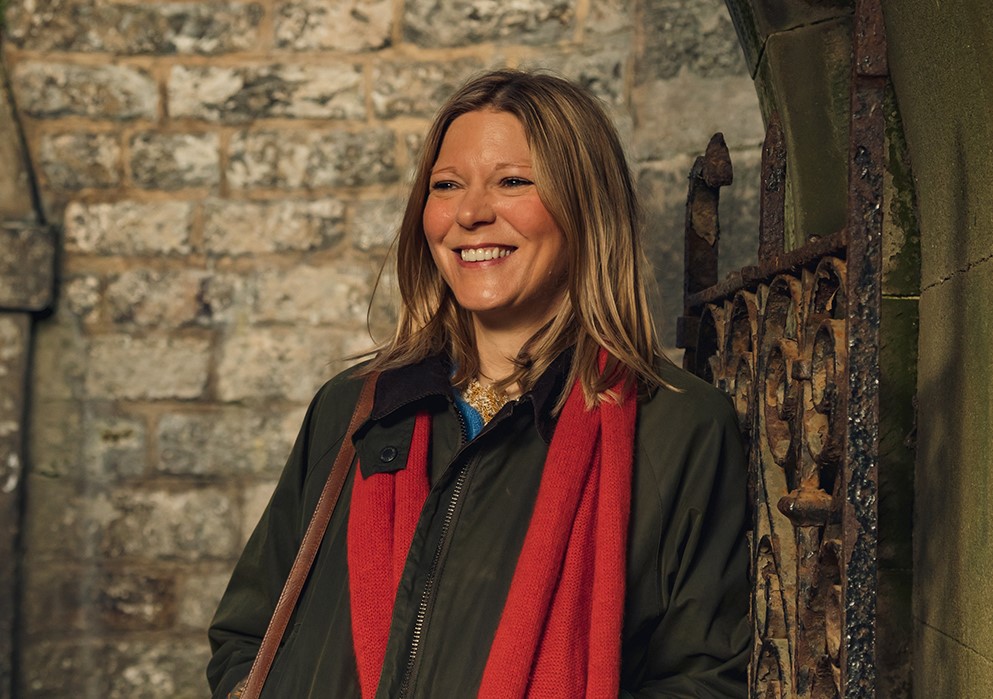 |
|
| Caroline Eden (photo: Effie Ioannou) |
|
Caroline Eden is a food and travel journalist based in Edinburgh, Scotland. She is a recipient of the Art of Eating Prize and the André Simon Award. Her previous works, Samarkand, Black Sea, and Red Sands, blend nonfiction topics including food, history, and travel. There is a similar mix of genres to her fourth book, the winsome memoir-with-recipes Cold Kitchen (Bloomsbury; reviewed in this issue).
The focus here, as in your three previous books, is on Eastern Europe and Central Asia. What is it about this region that captivated you and keeps drawing you back?
I first travelled to Central Asia back in 2009 and then slowly fanned out from there, to the Caucasus, Turkey, Russia, Ukraine, and Eastern Europe. There are shared flavors, dishes, and ingredients in the countries that directly border the five Central Asian countries--Kazakhstan, Kyrgyzstan, Turkmenistan, Tajikistan and Uzbekistan (for example, in northern Afghanistan and Xinjiang in China, home to the persecuted Muslim Uyghurs)--and also those that were once part of the giant Soviet Union. That was a time when people travelled and worked throughout, between, say, Ukraine, Kazakhstan, Georgia, and Uzbekistan.
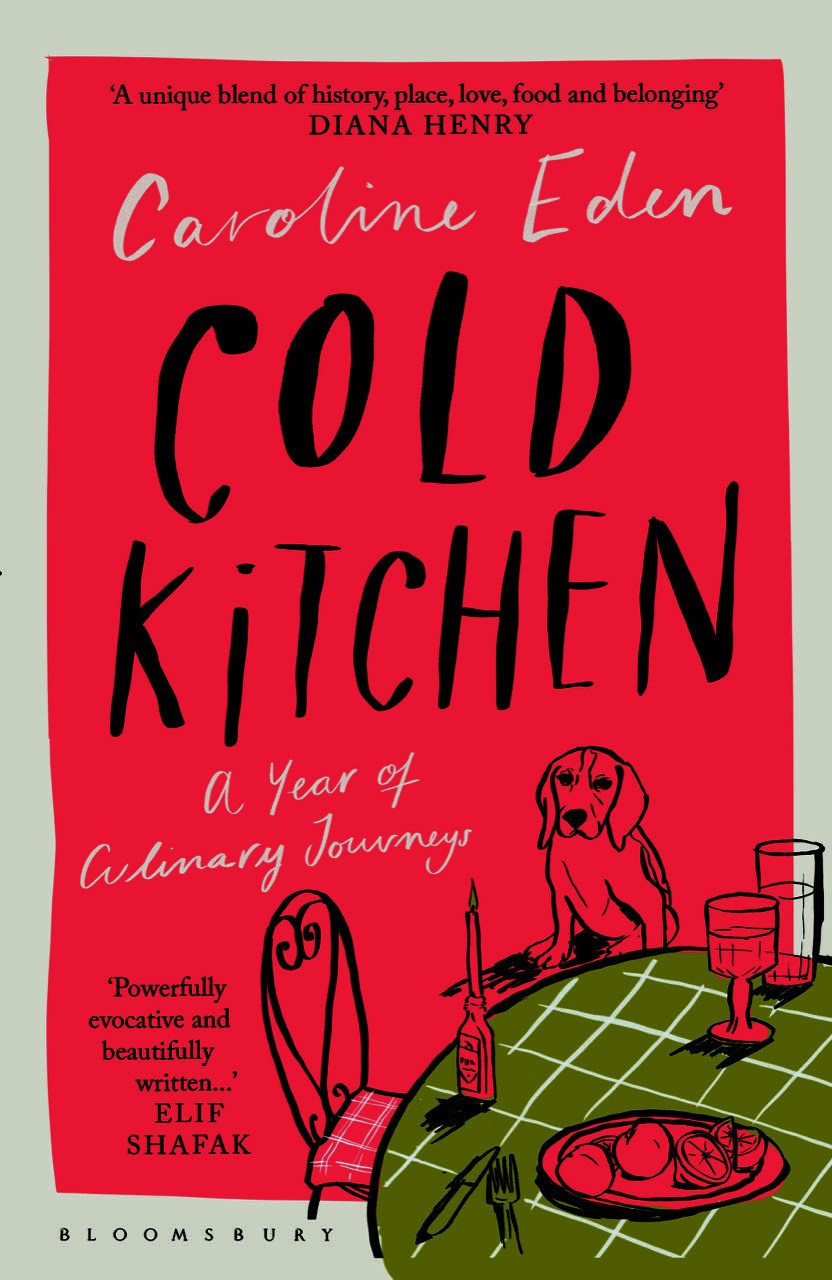 Language matters, too; the Turkic-speaking world is huge and shares not only words but dishes, so you'll find similar things on the menu in Turkey as you will in Uzbekistan. The same can be said for the Russian-speaking world: if you look at Central Asia and the Caucasus, many people will speak a Turkic language, e.g., Uzbek or Kyrgyz, as well as Russian.
Language matters, too; the Turkic-speaking world is huge and shares not only words but dishes, so you'll find similar things on the menu in Turkey as you will in Uzbekistan. The same can be said for the Russian-speaking world: if you look at Central Asia and the Caucasus, many people will speak a Turkic language, e.g., Uzbek or Kyrgyz, as well as Russian.
Then there are different environmental factors which shape harvests and ingredients and which span manmade borders and different countries. The Black Sea, which I wrote a whole book about, has seen migration and trade for centuries, and the countries that surround it generally share a fondness for herbs, polenta, honey, anchovies, and hazelnuts. It's like a giant jigsaw puzzle shaped by history (think of the Silk Road), geography, language, and religions. And once you start exploring, it is completely addictive.
The book also travels through a year, from winter to autumn. How does the seasonal structure reflect your cooking approach?
I love pickles and tinned food, and I usually cook on a budget, so I don't feel massively impacted by the seasons, though obviously I look forward to things like asparagus and blood oranges. I also switch up the herbs on my kitchen windowsill accordingly: soft herbs in the warmer months; woodier varieties in winter. Here in Edinburgh, it is always quite chilly, though, so much stays constant.
Oddly, it is when I'm in Istanbul, a city I spend a lot of time in, that I tend to pay more attention to the seasons. In winter, for example, I am eager for hamsi (anchovy) dishes, chestnut pilavs (pilafs), and boza, a pudding-like fermented millet drink.
We often hear, in approving tones, that "the world is getting smaller" thanks to social media and globalized culture. Yet we observe xenophobia, restrictions on movement, and severe environmental threats. What do you see as the future of food and travel writing in this context?
I think it's all relative. You might see a nicely curated video on social media of a travel blogger driving across the steppe of Kazakhstan that has had tens of thousands of views, but most people couldn't name the capital of that country. Nor do they have any understanding of how politics is playing out between Russia and China in Kazakhstan today, or how the misery of the environmental fallout of the Aral Sea disaster, which Soviet-era leaders were responsible for, still impacts lives and health.
The job of a writer is to report back and to do so with the utmost respect and empathy, and also not to skirt around the harder issues. Food and travel writing can be many things. It can be whimsical and fun, but it can also cover war, politics, agriculture, animal welfare, the environment, and uncomfortable histories that we have to face up to. A mix is best for the reader, I think!
I loved the way that domestic life contrasts with international adventure throughout the book. How does the one fuel the other, or provide a change of pace or recovery period?
The kitchen is somewhere that entices me home; it is a room that is capable of soothing my pathological restlessness, at least for a while. It is a hitching post. It's also where I write (in a little office off to the side) and obviously where I cook and test recipes. I also know that it is people that make it; I love having friends over to cook for. For me, the kitchen is home.
Which is your favorite dish in the book? What, in your opinion, characterizes a great recipe?
My favorite dish in Cold Kitchen is the layered rice dish plov, in this case with duck and barberry. I was served it in Kyrgyzstan by a relative of my Russian teacher just before huge political upheaval and violence erupted on the streets of the capital, Bishkek, so I remember it well not just because it was delicious.
A great recipe for me is something a little familiar but with a twist, and ideally something from the region I'm interested in. Even better if it symbolizes something interesting. The layered rice dish plov is a sharing dish--one big plate sits at the center of the table--and therefore it symbolizes the genuine and heartfelt hospitality that Central Asia offers.
You find plov throughout Central Asia, and it changes slightly depending on where you eat it. In Uzbekistan, one cook in one town might keep quails and so then you'll likely have quail's eggs on top; if it's autumn, your plov may come with quince. If it's in a fancy restaurant, you might have the option of horse meat. In Azerbaijan in the south Caucasus, given that the country is on the Caspian Sea, fish plov is served, and that is quite hard to find elsewhere. --Rebecca Foster, freelance reviewer, proofreader and blogger at Bookish Beck
Book Candy
Book Candy
Tootler and squibbler, for example. Mental Floss collected "19 old-fashioned words for writers."
---
The Royal Mint will honor author George Orwell with a new £2 coin, released in commemoration of the 75th anniversary of his death.
---
Pop quiz: Merriam-Webster prescribed "a visit with the word doctor: medical terms quiz."
Rediscover
Rediscover: Nathalie Dupree
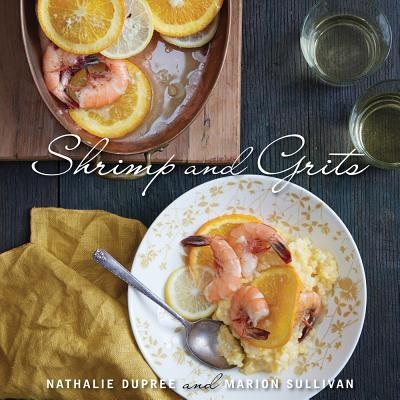 Nathalie Dupree, "the grand dame of Southern cooking whose infectious personality and vast knowledge of how to blend tastes into memorable concoctions," died January 13 at age 85, Charleston City Paper reported. Dupree won four James Beard Awards, wrote 15 cookbooks, and appeared in more than 300 TV shows.
Nathalie Dupree, "the grand dame of Southern cooking whose infectious personality and vast knowledge of how to blend tastes into memorable concoctions," died January 13 at age 85, Charleston City Paper reported. Dupree won four James Beard Awards, wrote 15 cookbooks, and appeared in more than 300 TV shows.
Dupree's culinary career began in a co-op house in college. She went on to earn a certificate at Le Cordon Bleu and operated the kitchen of a restaurant in Spain. She later opened Nathalie's restaurant in the back of a Social Circle, Ga., antique shop. By the late 1970s, she was directing the South's first participation cooking school at Rich's department store in Atlanta, where she taught more than 10,000 students. This led to the start of a popular TV career that included PBS, the Food Network, and the Learning Channel.
"Her quips and messy foibles in the kitchen endeared her to legions of fans," Dupree's obituary noted. "Applying French techniques she learned in culinary school to the bounty of the Southern garden, market, rivers and ocean, she lifted the profile of Southern food to a national audience. Her 15 cookbooks stand as reliable guides for the home cook filled with what she called 'do-able' recipes."
Dupree co-founded the International Association of Culinary Professionals (IACP) along with chefs Julia Child, Jacques Pepin, and Martin Yan. She also was the founding chair of the Charleston Wine & Food Festival, as well as a founder and board member of the Southern Foodways Alliance. Dupree organized several chapters of Les Dames d'Escoffier, an international association for women dedicated to advancing women in the culinary industry. In 2011, the organization presented Dupree with its highest honor, Grande Dame.
Her cookbooks include Nathalie Dupree Cooks for Family and Friends; Nathalie Dupree's Matters of Taste; Nathalie Dupree Cooks Everyday Meals from a Well-Stocked Pantry; New Southern Cooking; Nathalie Dupree's Southern Memories Recipes and Reminiscences; Mastering the Art of Southern Vegetables; Mastering the Art of Southern Cooking; Nathalie Dupree's Comfortable Entertaining at Home with Ease and Grace; and Nathalie Dupree's Shrimp and Grits (with co-author Marion Sullivan).
"Nathalie schooled me endlessly in the arts of storytelling and television," said chef Lauren Furey, who interned with Dupree in 2019 and has a cooking show on SCETV. "Her eyes lit up when she opened the door every morning. Or, if I opened the door, she usually was sitting in her comfy chair, surrounded by piles of cookbooks that she was reading and reviewing. She made everybody feel like they belonged."


